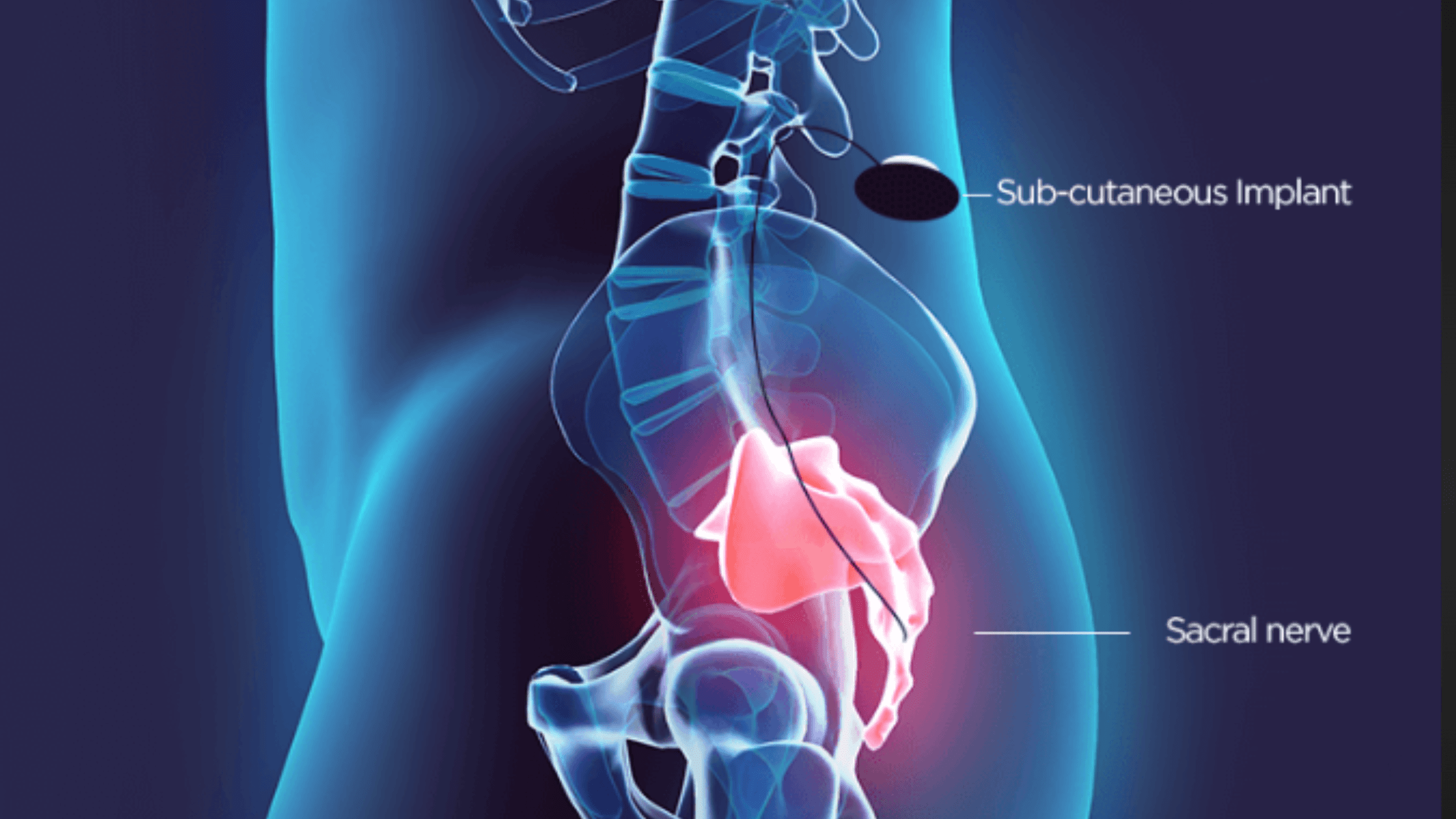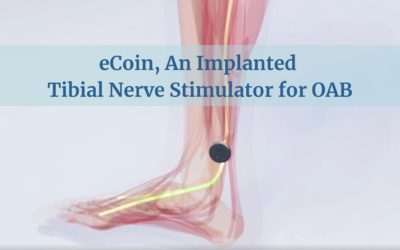Sacral Nerve Stimulation, or SNS
I discussed two forms of tibial nerve stimulation in the last two posts. This nerve can be stimulated percutaneously (through the skin with a needle) or with an implanted stimulator. Stimulating the third sacral nerve can also treat bladder symptoms. The sacral nerves are the lowest nerves in your back, near the tailbone. They are paired nerves, one on the right and one on the left. These nerves provide motor function to the pelvis and leg and receive sensory information from the pelvis and leg. So damage to these nerves can cause many different problems, including bladder and bowel leaking, back or leg pain, or decreased feeling in the groin or butt. Selectively stimulating the third sacral nerve can help improve bladder symptoms. We call this sacral nerve stimulation (SNS) or sacral neuromodulation.
How does sacral neuromodulation work?
There are many theories about how this therapy works, but we aren’t 100% sure. But the current theory is that it activates the part of the somatic nervous system, which causes neurotransmitters to be released in the central nervous system. This, in turn, leads to the moderation of abnormal bladder sensory and motor functions. Therefore, SNS can help with symptoms of an overactive bladder (needing to rush to the bathroom, going all the time, leaking before you can get there) and trouble emptying the bladder.
How is sacral nerve stimulation done?
There are two phases to placing a sacral nerve stimulator: the test and the implantation phases. The test phase is to see how well the stimulator works for you.
Before the test phase, we ask you to complete voiding diaries. This is how we record your baseline symptoms- how often you are leaking, how often you are voiding, and how significant your urge is. Once this is done, we place a small lead next to the nerve with a needle. This can be done in the office or in an operating room setting.
Here are the exact steps:
- Come to the office and lie on your belly
- Clean off your back.
- Measure 11cm up from the coccyx and 2cm lateral to each side
- Number area
- Place needle by nerve
- Conduct a small amount of electricity to stimulate the nerve to ensure it is in the right place. If it is in the right place, the anus will contract, and you can feel the increased vaginal sensation.
- Remove a middle portion of the needle
- Place lead through the needle
- Remove needle
- Test lead
- Tape down the lead and connect it to an external battery.
- Consider repeating on the other side
Once the test placement is completed, you live with the lead in place for up to one week. You keep diaries of your symptoms. You can’t get the lead or dressing wet. If the symptoms in your diary improve by more than 50% (and you like the therapy), you are a candidate for the permanent placement.
The implantation phase is done in an operating room. A more sophisticated lead with more programming options is placed in a similar fashion. The lead is connected to a battery that is placed under the skin, just below your hip bone. This is done with an x-ray to make sure it is placed as perfectly as possible. Once it is in place, the device is programmed. You are given a remote and taught how to use it. SNS comes with either a normal battery or a rechargeable battery. If it is rechargeable, you are taught how to do this. The technology can be confusing, so we ensure you have someone to contact if you need to troubleshoot the technology. If the device stops working well, it can be reprogrammed in different ways.
How common is sacral neuromodulation?
Sacral nerve stimulation was FDA-approved in 1997. Since it was approved, over 300,000 devices have been implanted. There are currently two companies that provide this technology. One is Medtronic, and the other is Axonics. This procedure is becoming more popular over time.
How effective is sacral nerve stimulation?
About 70% of women who do the test phase will go on to the implantation phase. The women who don’t move on to the next phase either don’t have enough improvement or don’t like something about the technology. Presently sacral nerve stimulation works in 60-90% of women. It is more effective for women with overactive bladder than with retention. And it is common to need reprogramming over time.
What can go wrong?
After the procedures, the most worrisome side effects are bleeding and infection. The more common side effects are pain by the incision and bruising. The third sacral nerve has both motor and sensory functions. Stimulating this nerve can cause some muscle twitching or some odd sensations. We can often reprogram the device, so these effects disappear.
Another thing to remember is that the battery will have to be replaced over time. Undoubtedly, this means another surgery. How long the battery lasts depends on your device settings and whether it is rechargeable.
Regardless sacral nerve stimulation requires a test phase and surgery, but if it is effective, it can provide a lifetime of an improved bladder. And the invasiveness is worth it to many women. Both companies provide an “ambassador” program. With this program, you can talk to a woman with a sacral nerve stimulator. She can often give you more real-life insight than any discussion with your physician. SNS is just one more treatment options we have for an overactive bladder. It isn’t for everyone, but it does help and cure many women.

Leron E. Curr Urol 2018
Lucacz ES JAMA 2017
Dobberfuhl AD Female Pelvic Med & Reconstruct Surg 2018






0 Comments